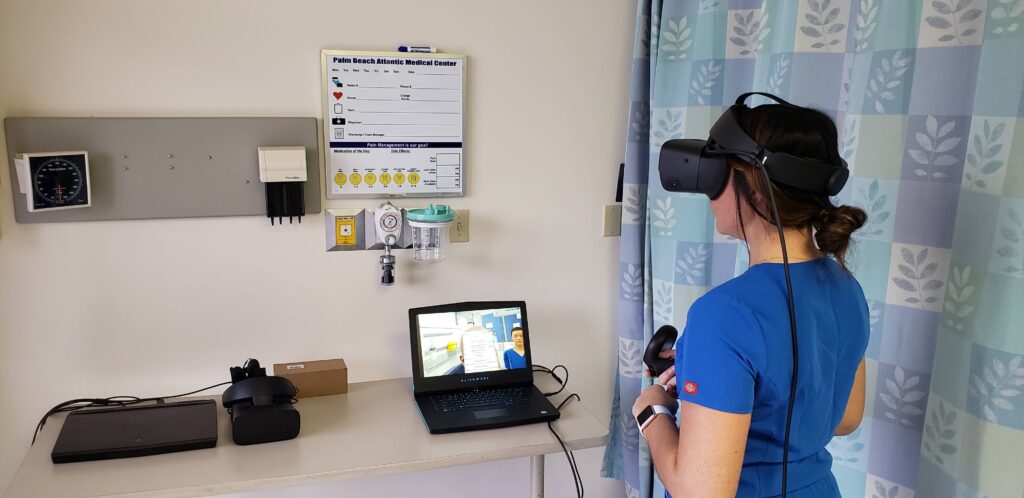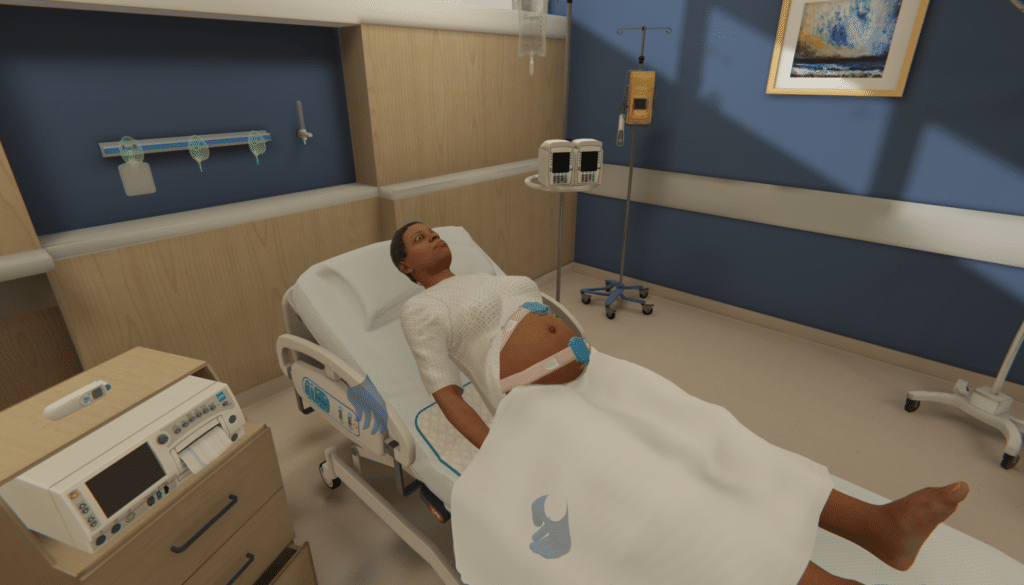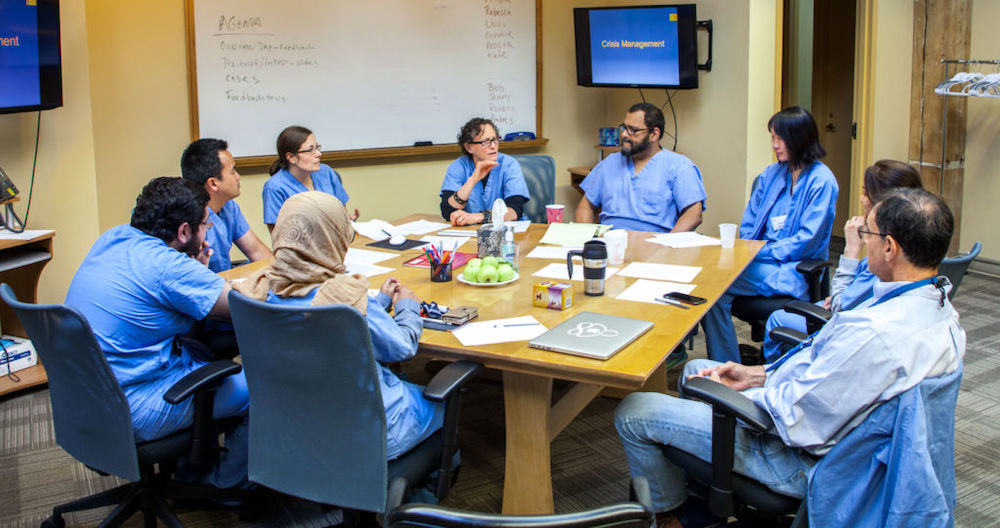The nursing workforce shortage continues to be a global problem. While initiatives are in place, and there is renewed attention on recruitment and retention, other factors need addressing to solve the shortage holistically.
There is a clear decline in the number of students entering or applying to nursing schools in the United States and the United Kingdom. Although the causes of these issues appear to differ, the US and the UK are both facing similar challenges.
Exploring contributing factors to nursing student shortages
Impacts on US nursing education
For example, US nursing schools are currently limited in student capacity, meaning schools are now turning away pools of interested students. According to the AACN, nursing schools across the US turned away nearly 92,000 qualified applicants in a 2021-2022 report.
One significant factor in this issue is the national nurse faculty vacancy rate of 8.8%.
There are several reasons why this might be the case.
Nearly one-third of the current nurse faculty workforce is expected to retire by 2025, as the average age of a doctorally prepared nursing professor is approximately 62.5. Per the AACN, this number continues to rise, potentially limiting the working time frame for highly qualified nurse educators.
Additionally, enrollment in master’s and PhD programs is down, and compensation in related career paths is higher.
According to The 2024 Nurse Salary and Work-Life Report, the average salary in the US for an advanced practice registered nurse was reported to be $120,000. However, the average salary for a master’s-prepared nursing professor is nearly $87,000, according to the AACN.
The demanding workload placed on an already stretched faculty, other avenues for professional development elsewhere, and a hefty barrier to entry for a career in academia makes it difficult for nursing schools to attract and retain faculty.

Impacts on UK nursing education
On the other hand, nursing schools in the UK are seeing their lowest numbers of applicants since they began tracking more data in 2019. The applicant pool for the 2024-2025 academic year is down by about 7% compared to the previous year.
Additionally, nurse educators in the UK are managing heavy workloads like their US counterparts.
These issues have become increasingly apparent, and as a result, an Educator Workforce Strategy is now in place to address the contributing factors, balance the workload for nurse educators, and promote a clear path for professional development.
Recommendations from a recent report by University Alliance echo the sentiments of the HEE Educator Workforce Strategy.
Collaborating and connecting the education sector alongside the healthcare systems as they plan for the future is one way to align and involve educators and practitioners in workforce planning.
Additionally, University Alliance recommends that educators embrace simulation, as outlined by the Nursing and Midwifery Council, to support students in a realistic yet safe learning environment as they prepare for the transition to practice.
Why physical simulation may not be enough
Manikin-based simulation or the use of standardized patients is one of many forms simulation can take in education.
Many institutions rely on this type of training in order to expose learners to all types of clinical situations – often for low frequency, high stress events.
While a valuable form of simulation-based education, physical simulation is not without its problems.
Conducting a day of simulation for learners is not only resource-intensive, but it relies heavily on educators to plan, set up, run, and break down – not to mention the need to supervise and provide meaningful feedback and debriefing opportunities to learners.
Additionally, not everyone has easy access to a simulation lab or can align so many people’s schedules to get learners and educators all in one place at the same time.
As these simulation days are often conducted in groups, some learners will get more opportunity than others to apply clinical knowledge.
Particularly when working with standardized patients, answers or experiences may differ between groups, raising questions about whether learners are all receiving a standardized experience.
Many educators need a reduced workload while also being able to provide more simulation to learners more frequently.

How AI and VR may be able to help
The rapid development of technology and how to best use it continues to be a looming question for the healthcare industry.
AI-driven technologies are increasingly being used to streamline work efficiencies, decrease administrative workloads, and, at the core of it, make people’s lives easier.
Of course, implementing new tech doesn’t mean a cure to the workforce crisis. Still, it may be able to help decrease workloads placed on faculty workloads while engaging students, many of whom expect schools and facilities to be on the frontlines of embracing technology.
Simulation-based education is now a cornerstone of healthcare education. While physical simulation has its place in education, conducting even one day’s worth of these scenarios remains resource and time-intensive.
Embracing innovative technology and opening up curricula to other simulation forms may result in a lessened workload for faculty and an engaged and excited student body.
For example, virtual reality has been widely used to facilitate simulations, providing similar learning outcomes to physical simulation at a reduced cost. Many students are already familiar with this technology and are eager to use it as a learning tool.
For educators, VR scenarios can mean a significantly lighter workload for simulations, with few constraints on time or space to conduct scenarios.
For example, the OMS platform can be accessed in a VR headset or on a desktop. Students can log in at any time and complete scenarios at their own pace—whether before, during, or after a didactic lesson.
As learners lead scenarios, the OMS platform logs and tags data throughout, meaning educators don’t need to worry about keeping track of every action a learner takes and when they hit or miss a required action.
Students can independently lead a case and repeat it as many times as they like, which differs from the typical group-based physical simulation.
Educators can rest assured that their students are receiving standardized simulations, and they can review data as it comes in to focus more on facilitating a meaningful debrief rather than spending so much time and energy in making sure that all the pieces of a simulation are in place.
For more information
The world needs nurses, which means people must be interested in the profession. This also means that the knowledgeable educators teaching the next generation of nurses need to be able to do just that without pressure to take on more work in other areas.
While not a panacea, embracing the wide world of technology can make a difference for both educators and students alike.
To learn more about implementing VR into your simulation program, read our comprehensive guide and grab the question checklist to find the right VR partner to fit your needs.
